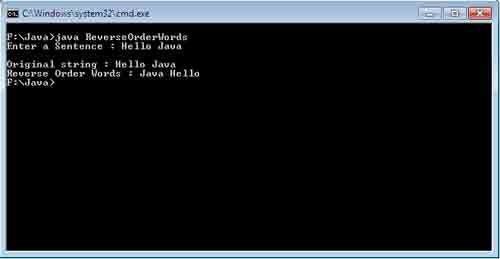Stack-This class is a predefined class of java.uti1package. A stack represents a group of elements stored in LIFO (Last In Fast Out) order. This means that the element stored as a last element in the stack will be the first element to be removed from the stack.
Methods of Stack class:
1. bolean empty(): It checks whether the stack is empty or not. If the stack is empty it returns true.
2. element peek():This method returns the top most object from the stack without removing it.
3. element pop():This method remove the top most element from the stack and returns the element.
4. element push(element object): This method insert an element object into the top of the stack and returns that element.
StringTokenizer: This class is a predefined class present in java.util package.It used to break the String into pieces i.e.tokens. These tokens are stored in StringTokenizer object from which they can be retrieved.
Methods:
1. boolean has MoreToken():- It used to test if there are more tokens available in the String Tokenizer object or not. It returns true if next token is present.
2. String nextTokens():- This method returns the next tokens from the StringTokenizer.
3. int countTokens():- It returns the number of tokens present in StringTokenizer object.
Algorithm for Reverse the Order of the Words in a Sentence:
step 1: read String a
step 2: create object of Stack class named sta
step 3: StringTokenizer st= new StringTokenizer(a)
step 4: repeat through step-5 while (st.hasMoreTokens()) returns true
step 5: sta.push( st. nextElement())
step 6: repeat through step-5 while(sta.empty()) returns false
step 7: print sta.pop()
step 8: print one space
step 9: Exit
Here is the Java Example for Reverse the Order of the Words in a Sentence:
import java.util.*; public class ReverseOrderWords { public static void main(String[] args) { System.out.print("Enter a Sentence : "); Scanner s=new Scanner(System.in); String a=s.nextLine(); Stack sta=new Stack(); StringTokenizer st=new StringTokenizer(a); while(st.hasMoreTokens()) { sta.push(st.nextElement()); } System.out.println("\nOriginal string : " + a); System.out.print("Reverse Order Words : "); while(!sta.empty()) { System.out.print(sta.pop()); System.out.print(" "); } } }

 Dinesh Thakur holds an B.C.A, MCDBA, MCSD certifications. Dinesh authors the hugely popular
Dinesh Thakur holds an B.C.A, MCDBA, MCSD certifications. Dinesh authors the hugely popular